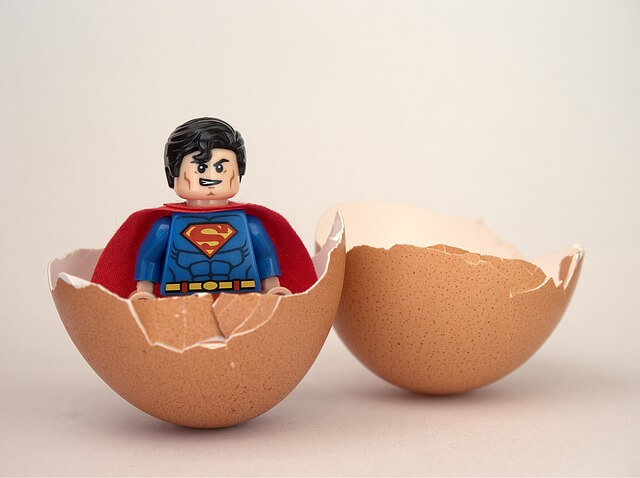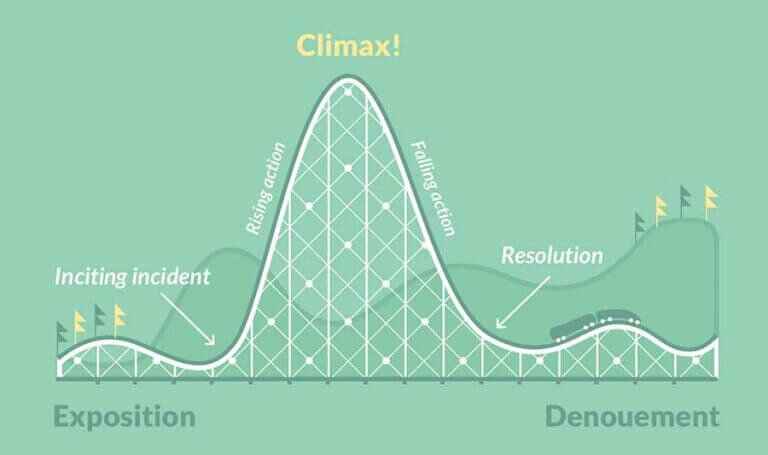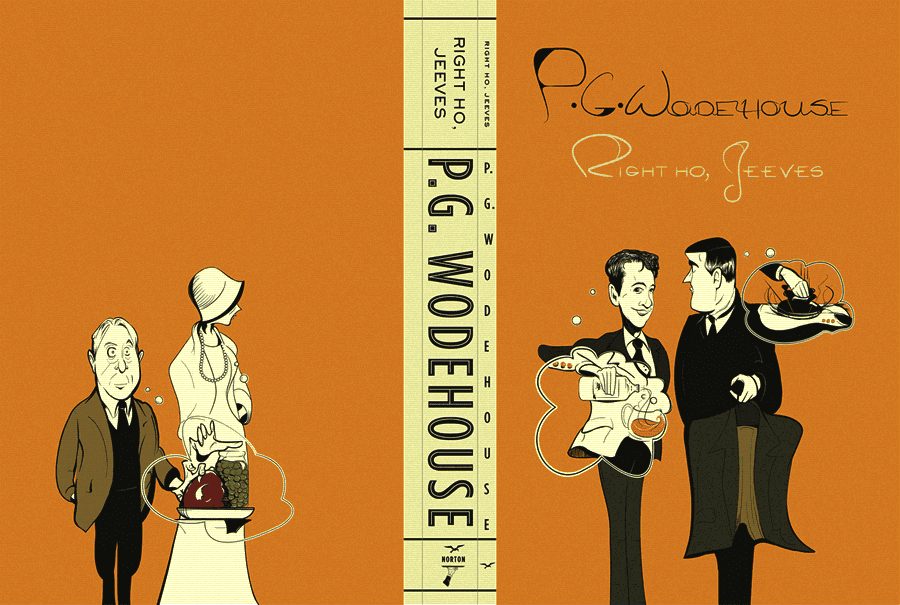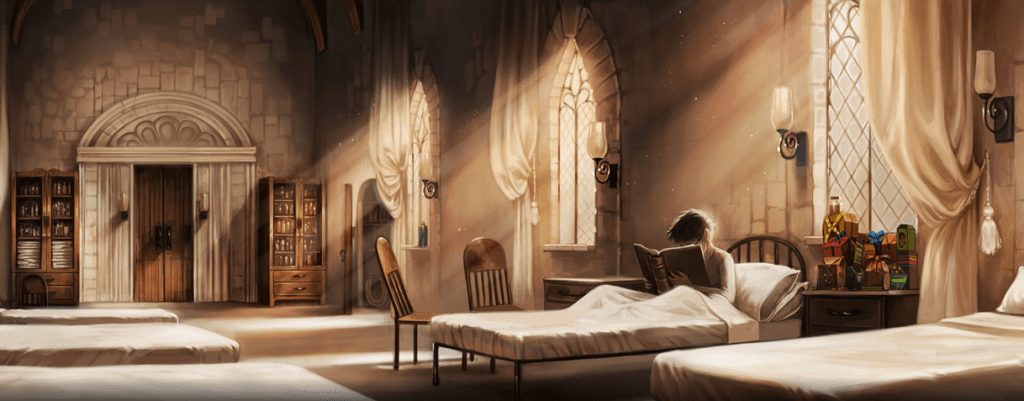When a Character in a Story Falls and Picks Up Again
Has anyone ever told you that your narrative arc was too weak? Likewise complex? Or not complex plenty?
Universal to both fiction and nonfiction, the narrative arc (also chosen the "story arc") refers to the structure and shape of a story. This arc is fabricated up of the events in your story — the sequence of occurrences in the plot — and determines the peaks and plateaus that set up the pace. A good arc is vital if you desire to appoint your readers from start to finish, and deliver a satisfying conclusion.
What is a narrative arc?
Narrative arc is a term that describes a story's full progression. It visually evokes the idea that every story has a relatively calm beginning, a centre where tension, character conflict, and narrative momentum builds to a peak, and an end where the conflict is resolved.
Y'all may already exist familiar with one archetype example of the story arc: boy meets girl, boy fails girl, boy gets daughter again. This may audio oversimplified, and it is. Adding complication to a basic story arc is part of what differentiates i story from another, fifty-fifty when they're ostensibly dealing with the same ideas.

It's sometimes useful to think about the story arc as though you're setting up a elementary dramatic play. Ultimately, yous've got 3 acts to tell your story.
- In Human activity One, you set the scene and introduce your audience to the characters, the setting, and the seeds of conflict.
- In Human action Two, your characters grow and change in response to conflicts and circumstances. They set up about trying to resolve the Large Problem. Usually, the conflict will escalate to a climax.
- In Human activity Iii, characters resolve the Big Trouble and the story ends.
Free Download: Three-Act Structure Template
Effortlessly plot your story with our customizable template. Enter your email and we'll transport it to you correct away.
What'southward the difference between a narrative arc and a plot?
While the plot is comprised of the individual events that brand up your story, your story arc is the sequence of those events. Imagine every scene of your novel summarized on notecards: the entire stack of cards is your plot, just the order in which y'all lay them out is your story arc.
Thinking virtually your arc is essential around this point. What if your Scene 1 notecard actually belongs in the denouement? What if y'all have too many scenes based on internal conflict in a row (leaving the external conflict to wither)? Advisedly ordering your plot into a cohesive story arc helps readers navigate your story, and sets expectations that you can either satisfy or disrupt.
If the plot is the skeleton of your story, the narrative arc is the spine. Information technology'south the central through-line marking the plot's progress from beginning to finish.
How nearly the graphic symbol arc?
The narrative arc is to the story what the character arc is to a character. It involves the plot on a grand scale, and a character arc charts the inner journey of a character over the course of the plot.
Another straightforward stardom: while the story arc is external, the character arc is internal, and each main (and sometimes secondary) graphic symbol will go through an individual arc.

All the same, narrative and character arcs are role of a symbiotic relationship. Each plot indicate in the story arc should bring your characters closer to, or farther from, their goals and desires. The circumstances and conflicts your characters face are role of the arc, but the way characters see challenges and change equally a event is "grapheme arc" territory.
PRO TIP: Interested in writing a solid character arc? Acquire about what defines a dynamic grapheme in this piece.
How to structure a narrative arc
And so, remember what we said about the three acts that make up a story arc? If yous try to visualize the progression of action in your mind, you may meet something that builds up and falls as and so:

That's right . . . a pyramid. (Ane that's set upon a roller coaster, for your viewing pleasure.)
Free course: Mastering the 3-Deed Construction
Learn the essential elements of story structure with this online course. Go started at present.
Freytag's Pyramid
In 1863, Gustav Freytag, a 19th-century German language novelist, used a pyramid to study common patterns in stories' plots. He put frontward the idea that every arc goes through five dramatic stages: exposition, rising action, climax, falling activity, and resolution.
Freytag'southward Pyramid is a useful tool that reveals the construction of many stories, and so it'southward the framework we'll exist using in the side by side few sections. Feel gratis to utilize the diagram above as a reference every bit you follow forth, or skip to your preferred stage below.
Exposition
Ascension Action
Climax
Falling Action
Denouement
Exposition
The de-facto introduction to your book, the exposition is Act I of the story arc. You're setting the table in the exposition: starting the story, bringing out your characters, setting up the seeds of disharmonize, and imparting just enough background information to go along the reader clued in on what'south occurring in the story.
Here's a brief overview of what else the reader should be able to extract from the exposition of your story (which, incidentally, ties neatly into the 5 Ws):
- The characters. Who's in the cast of characters? How can you lot differentiate among them?
- The setting. Where does your story take place? Don't forget that setting includes time — when does your story take place? What time flow?
- The mood. How will you set the tone of the novel in the exposition? A romance that suddenly goes sideways due to an alien invasion is going to confuse readers and deject your book'due south genre classification.
The size of the exposition depends on your book. The Count of Monte Cristo takes many thousands of words to set the stage, while P.G. Wodehouse wastes no fourth dimension galloping by the exposition. Here's a mail on chapter length if you'd like to learn more about pacing your work.

A discussion of caution: remember Evidence, Don't Tell — and don't mistake "exposition" for "info dump." Even while Tolkien is busy introducing the reader to an enormous cast of dwarves in The Hobbit, there's a booming party going on and poor Bilbo'south scrambling to serve tea! Readers volition exist interested in background information but when it doesn't distract or detract from the plot. You must balance action and information if you want them to continue flipping the pages.
Rising Activeness
What'due south a good story without a few (or more) wrinkles?
Usually, the rising activeness is prompted by a primal trigger (likewise known as the inciting incident), which is what says to the reader, "Here we go." It's the moment Romeo sees Juliet, or it'southward the carve up second in which Katniss's sister, Prim, is picked during the reaping. Whatever the circumstances, the key trigger is the effect that rolls the dice and causes a series of events to escalate, setting the rest of the story in motion.
As your exposition already set up your characters and disharmonize, it's at present the task of the rising action to:
- Develop the characters while assuasive relationships between characters to deepen.
- Escalate the conflict and amp up tension.
In Agatha Christie'south Murder on the Orient Express, everything that occurs after Hercule Poirot steps foot onto the railroad train — upward until the murder of R — constitutes the story'southward rising action. In the book, this stage's function becomes twofold: not only does it strengthen the suspense on the railroad train, but the sequence of events also starts revealing the cast of suspects' relationships and motives to the reader. How your characters reply to the changing situations in this stage will speak volumes about them.
Climax

A good climax will build upon everything earlier — the storylines, motives, graphic symbol arcs — and bundle information technology all together. Information technology'south both the moment of truth for the protagonist (the peak of the grapheme arc) and the result to which the plot'southward built up (the superlative of the arc). When the outer and inner journeys come together and click, you know y'all've got the beginnings of a winning climax.
On the flip side, a bad climax is the easiest way for a reader to feel cheated and chuck your book at the wall. They'll utilise your book equally tissue paper in the futurity, or — worse! — never pick a volume of yours up once more. And then the climax is one of the most important parts of your story arc. While information technology's the beginning that sells 'this novel,' it's the climax that sells 'the adjacent' novel.
Falling Action
Okay, then you've gone and banged out a climax that knocks the reader right out of the park. What next? Your job definitely isn't over yet, because the story tin can't just grind to a stop. (FYI, that would make it every reader's Public Enemy #ane: the bewilderment.)
Instead, yous can follow this erstwhile axiom: what goes up must come down.
 Let's say that Harry Potter and the Sorcerer'south Stone closes up shop correct when Harry passes out afterwards defeating Quirrell. But we need to run across Harry wake up in the Hospital and chat information technology out with Dumbledore; to feel satisfied, we need to see Dumbledore award Neville Longbottom the ten Business firm points that win Gryffindor the House Cup. In much the same mode, you can prove the reader the fruits of the protagonist'south toils. Remember of this stage as the bridge betwixt the climax and the resolution. How do you go your characters from the climax to Happily Ever After™?
Let's say that Harry Potter and the Sorcerer'south Stone closes up shop correct when Harry passes out afterwards defeating Quirrell. But we need to run across Harry wake up in the Hospital and chat information technology out with Dumbledore; to feel satisfied, we need to see Dumbledore award Neville Longbottom the ten Business firm points that win Gryffindor the House Cup. In much the same mode, you can prove the reader the fruits of the protagonist'south toils. Remember of this stage as the bridge betwixt the climax and the resolution. How do you go your characters from the climax to Happily Ever After™?
Here are a few things to keep in listen during this stage of the story arc:
- Your characters shouldn't finish moving simply considering you've checked off the climax. The word "activeness" does exists in "falling action"; arrive count.
- Commonly, this is the stage where authors start resolving any remaining subplots and mini-conflicts. In Shakespeare's comedies, this is the stage where anybody merrily pairs off with the right partner. Use this space to tie upwardly whatsoever and all dangling threads.
Denouement
And after all that? Well, you've fabricated information technology to the denouement. Elizabeth Bennet and Mr Darcy are engaged. Bilbo returns to Bag Terminate. Huck Finn settles downwardly with Aunt Sally to exist "sivilized." Ishmael is rescued from the sea. Everywhere, readers exhale a collective sigh of relief.
Also called the resolution, the denouement is merely a fancy fashion of saying that the book is now going to wrap upwards.
For an example of this phase's function, have the one-time-fashioned detective novel. In the detective denouement, the detective gathers anybody in a room and reveals the whodunnit, explaining everything. All questions are resolved, all ends are wrapped upwards — and the reader tin can shut your volume with peace of heed. Congratulations! That'southward the whole arc business concern done and dusted. Isn't it?
Well, sometimes. That begs the question of. . .
Does Freytag's Pyramid work with every story?
History is dotted with novels that bucked the tendency. On the Road possesses nigh no narrative arc while To Kill a Mockingbird arguably possesses two arcs (the arcs of Tom Robinson and Boo Radley). The Trial builds up to a complete anti-climax in the place of a climax; meanwhile, Catcher in the Rye casually drops a sentence in the denouement virtually (spoiler warning) Holden going to a mental institution before the book ends, abruptly.
All this is to say, there's plenty of room within the arc to explore and experiment. Disrupting reader expectations isn't always a bad thing, but successfully straying from the expected course requires comprehensive understanding of the traditional story arc. Later on all, you can't break what you tin't build.
Some other detail of note: although the popular v-act structure of Freytag's Pyramid does capture the chronology of many books' plots, exist aware that some authors use a three-act structure. Ane significant modify that volition result deals with the placement of your climax, which this mail service over at Vintage Novels analyzes quite thoroughly, through The Lord of the Rings.
Putting it all together
Here'south a parting souvenir before you go: a video from Kurt Vonnegut, describing the shapes of stories.
In the end, that's what a strong story arc does: it gives a story shape. For alternative story structures, cheque out the Hero's Journey, Dan Harmon's Story Circumvolve, or these three story models. To add together more dimensions to your story, you tin experiment with subplots. Subplots role as mini-arcs, though they should always aim to contribute to the main arc in some way.
Sort out your story arc — experiment with it! — and your story won't be a formless, blobby thing. It'll proceeds a spine and new readers.
And, of course, if you're struggling to create a compelling narrative arc, a professional developmental editor will exist able to come to the rescue and spot deficiencies.
Any questions for us most the story arc? Go out them below — and if yous want to share your ain experiences with narrative arcs, please exercise so!
Source: https://blog.reedsy.com/narrative-arc/
